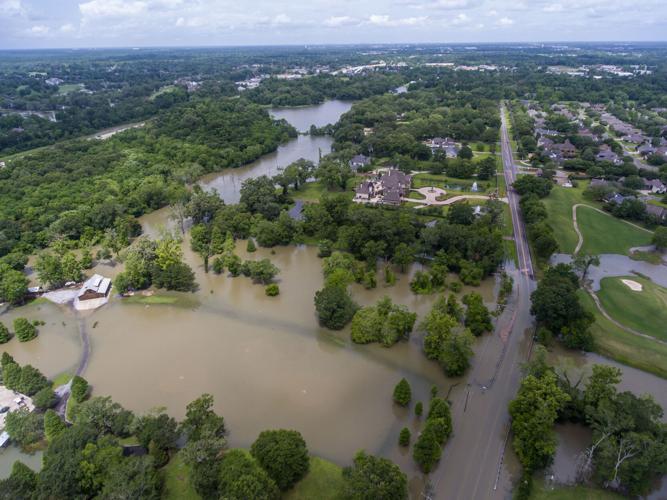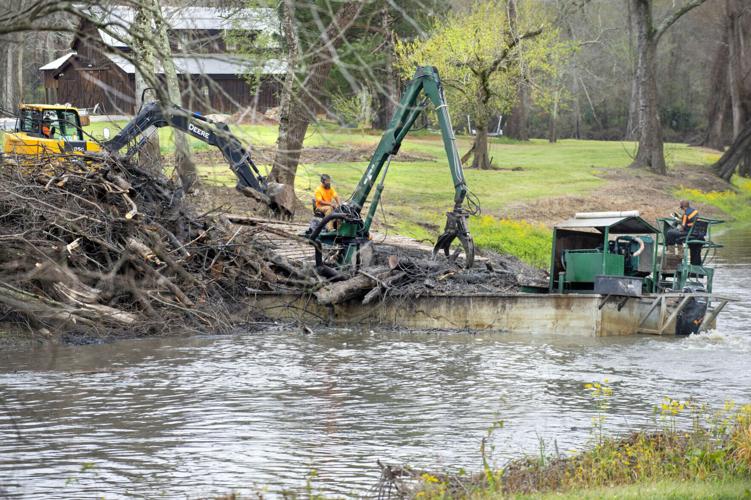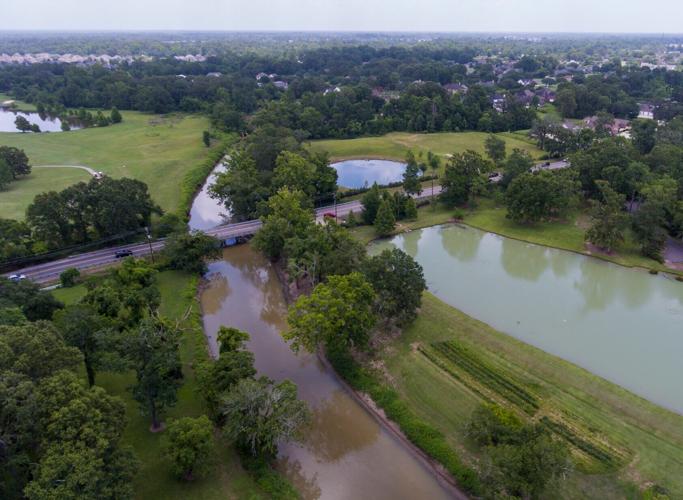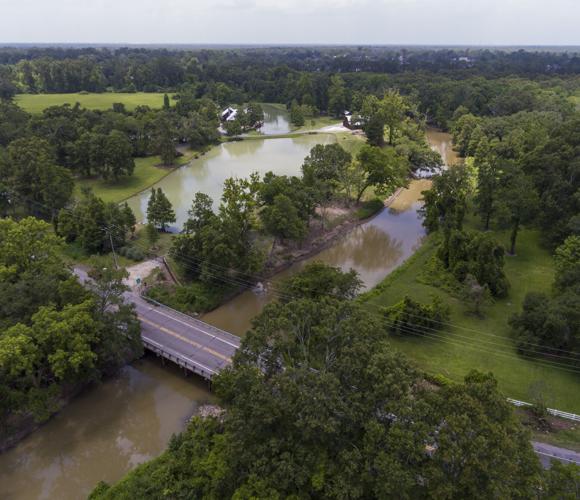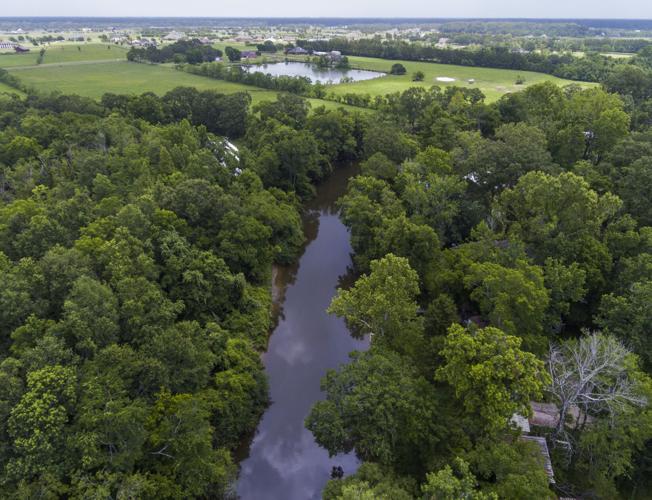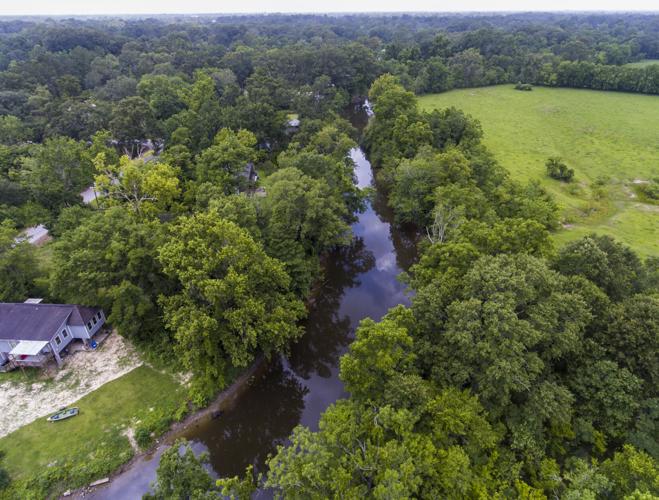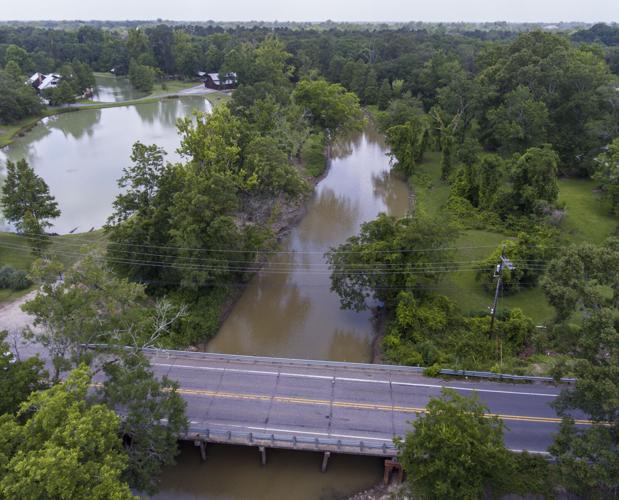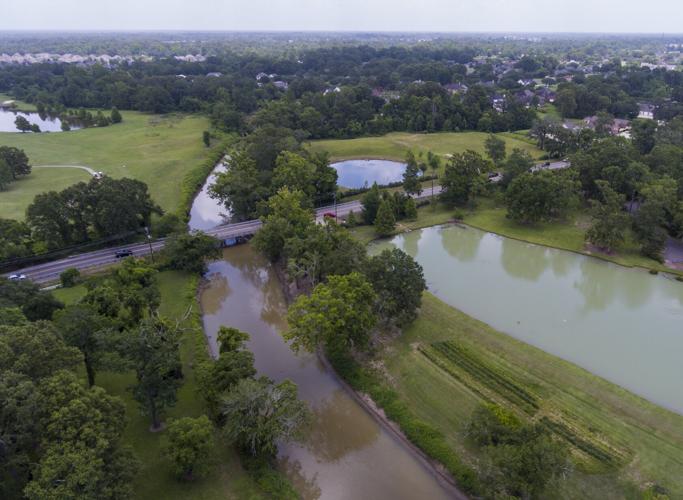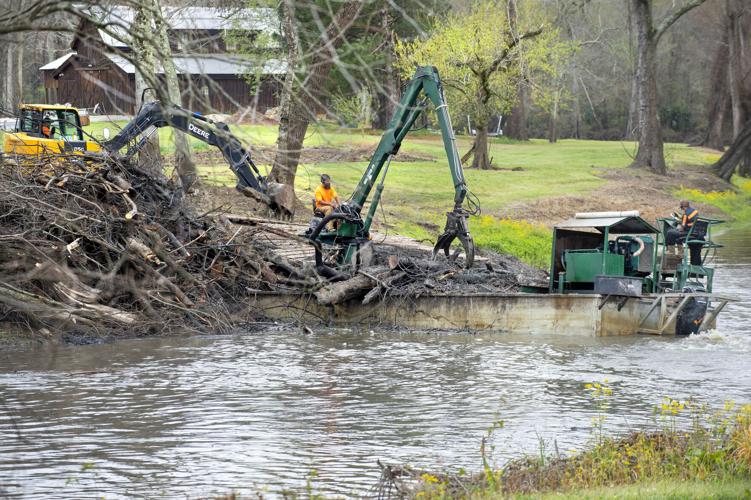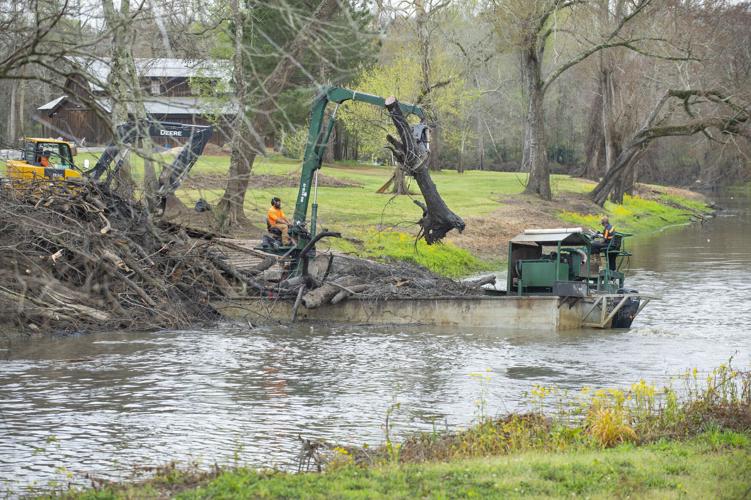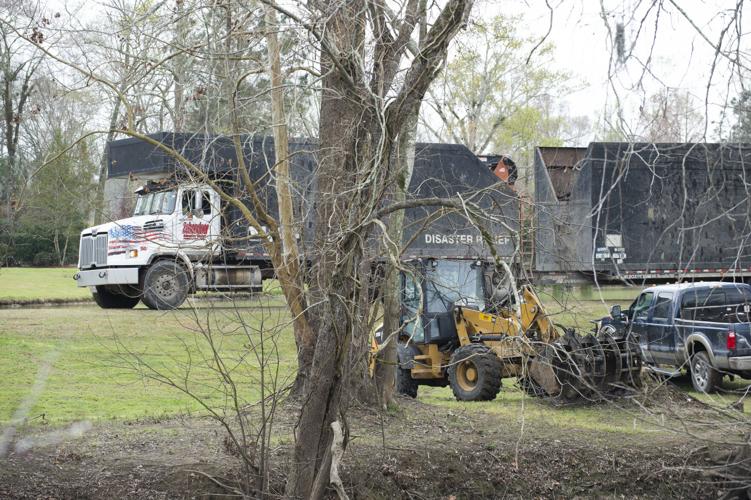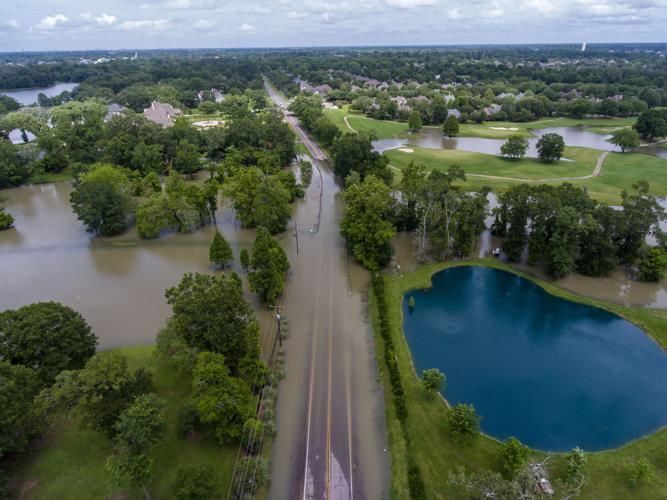When Bayou Manchac floods, tens of thousands of people in the Baton Rouge area are at risk.
Threading through the rapidly growing suburbs to the city's southeast, the bayou is an important feeder to the Amite, the primary drain for the region. And the bayou has been a priority target for efforts to reduce flooding after the catastrophic deluges of 2016.
But now two different Louisiana commissions are caught in a bureaucratic tug-of-war over who leads the effort to solve the problem.
Last fall, Louisiana awarded $100 million to the Amite River Basin Commission, a state panel of gubernatorial appointees and local parish government officials tasked with minimizing flooding in the region. Though the funding wasn't tied to a specific project panel members prioritize removing debris and channelizing the bayou, allowing water to flow more freely.
But at a meeting last week, the commission raised a problem: A different commission has been working on its own, similar plans.
The Pontchartrain Levee District, which collects property taxes to maintain the east bank Mississippi River levee in the area, has separately sought more than $10 million to do preliminary work on a nearly $83 million project, which it says would cut floodwater levels for more than 79,500 homes and businesses in the area.
So who's in charge?
Amite River Basin officials, who say they were caught off-guard by the levee district's capital outlay requests, argue they should be the ones leading the project because their board includes top elected leaders for the affected parishes.
"If you don't have local involvement and you just got another agency that wants to propose this, how do we know it's going to be to the benefit of the people and the tax dollars at the same time?" said Livingston Parish President Randy Delatte.
The commission also points out that it already has money dedicated to do the project.
"We have the funding," said Ascension Parish President Clint Cointment, who sits on the commission and led a successful push last week to declare the panel's primacy on the project. "Nobody else does, not a single agency out there has funding to do this project."
But levee district officials say they already have a draft engineering plan for their project, unlike the commission, and disputed anyone should be surprised by their efforts.
Even before parish leaders like Delatte and Cointment were seated on the Amite commission in early 2023 following a legislative revamp, levee district officials say they had been keeping parish leaders in the loop for over three years through a series of meetings, including with then-Gov. John Bel Edwards.
Through those meetings, levee district officials said they gained the impression that Cointment and, by extension, the Amite commission would be pursuing a different project, a new pump station in Ascension.
In June 2022, they say they even held off on requesting state money for their Manchac plans at Cointment's request to give Ascension officials a few more months to study the pump station idea. The station would drain the Spanish Lake area to the Mississippi River and lower water levels in Manchac.
Cointment, who was not yet on the Amite commission but was promoting the pump station, had wanted the Manchac dredging and pump station ideas to be submitted to the state together, levee district officials said.
"As a gesture of good faith and partnership, (the levee district) agreed to wait until mid/end of August (2022) as President Cointment requested," a levee district statement says.
Last year, a majority of the newly refashioned commission did end up rating the Manchac work as its top project for the $100 million outlay from the state, though Cointment rated the pumps first and tagged the work on Manchac second.
Levee district officials added their intention had always been to hand over the Manchac project to the commission anyway but argued it hadn't been moving forward while the clock was ticking on a legislative exemption to the bayou's historic and scenic river protection. The exemption, which eases the path for dredging and other work, ends in 2026.
"We just figured, like I said, 'It's too good. It's the right thing to do for the people and so we've moved forward with it," said Monica Salins Gorman, the district's executive director.
Both proposed cleanups of Manchac would do massive debris removal work and dredge the bayou's bottom. That would allow more water to flow, reducing the risk that the bayou would overtop its banks.
For the levee district's $82.5 million plan, the biggest cost, about $73 million, would be dredging out high spots in the bayou and restoring the natural downward slope of Manchac from Nicholson Road near the University Club neighborhood to the bayou's junction with the Amite. Another $5.4 million would be spent on deepening a portion of Alligator Bayou, a tributary of Manchac.
The levee district's plan would also reorient Ward Creek and raise the Perkins Road bridge over the bayou, removing obstacles that currently obstruct water flow.
The benefits could be enormous. A preliminary engineering analysis of the levee district plan estimates almost all of the thousands of protected structures would see floodwater reductions of about 8 to 13 inches in a 100-year rainstorm. A 100-year storm has 1% chance of happening in any given year.
Crucially, the analysis found the changes would not worsen flooding downstream in Livingston Parish, a fact shared with and discussed with that parish's engineering firm in 2022 and 2023, levee officials said.
The mix-up between the two agencies underscores a long-standing problem: Manchac and similar waterways are the boundaries between several parishes, which means it's not always clear who is responsible for maintaining them.
Last year, the problem became visible when contractors only cleared the Ascension Parish side of the bayou for a time because East Baton Rouge hadn't yet approved a contract; the workers later returned and cleaned the other side once the contract was adopted.
The latest dust-up is expected to play out in the coming weeks before the Amite commission and the Legislature.
Through three separate outlay requests, the levee district is seeking money for a new round of clearing and snagging and for the planning and permit work for the later phases, according to the requests and the district engineering study.
A local legislator says he's trying to find middle ground so the Manchac initiative, which he called "low-hanging fruit," can get done.
"I think there's basically — from what I can see talking to both of them — there's some miscommunications," said State Sen. Eddie Lambert, R-Gonzales.

